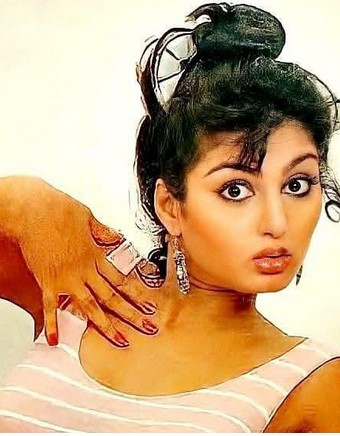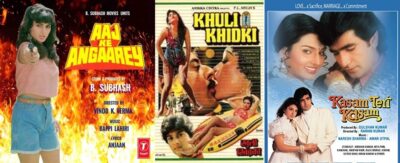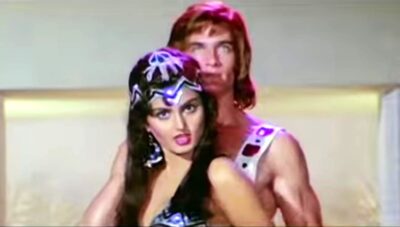QAMYAB – THE FORGOTTEN GEMS OF BOLLYWOOD
Qamyab is our humble tribute to all those lesser-known actors, one hit wonders and junior artists who we see umpteen times but don’t know about; beyond their faces. These actors have been an integral part of Bollywood but didn’t get their due. This series is our sincere attempt to put a name to these faces, familiarize them to our readers and celebrate their achievements in life – however big or small. We believe that every artist contributes in his/her own way to the cinema’s success. Qamyab will explore the unknown lives of such actors and artists as we believe even these forgotten gems of Bollywood deserve their due recognition today.

During the video era of the ’80s, noted publisher and producer Nari Hira came with the unique idea of making video films, which would release directly on VHS and not in theatres. The concept was similar to today’s OTT movies. This trend of home video films provided opportunities to many upcoming actors of that time
One such actor making a debut in a Nari Hira video film, went on to become a known name in Bollywood. He is Aditya Pancholi. Like Aditya, our today’s forgotten gem also started with video films and then entered mainstream Hindi cinema. Yes, we are referring to Neeta Puri
Introduced by Nari Hira’s Hiba Films, the young and beautiful Neeta Puri was quite popular from the mid ’80s to early ’90s. The generation growing up in this era would certainly remember this charming actress, who couldn’t make it that big in Bollywood, but is still remembered for her short stint
Neeta Puri was born in a Punjabi family in Jalandhar on 23rd September in the mid ’60s. Her parents migrated to New York in the ’70s, where she grew up, completed her education and gained U.S. citizenship
Neeta started modelling at a very young age and won the 1983 Miss India USA contest in New York and entered the glamour world
The same year, Bollywood showman Raj Kapoor happened to be in America as the Grand Marshall for India Day parade. The event organizers had also arranged a charity dinner for Kapoor and Neeta happened to meet him there
Raj Kapoor was making Ram Teri Ganga Maili (1985) that time and had already finalized Mandakini to play the lead role of Ganga. Neeta Puri told him that one day, she would love to work with him. Sadly, her dream of working with the legendary filmmaker remained unfulfilled as Raj Kapoor died a few years after completing Ram Teri Ganga Maili
Inspired by the meet, Neeta travelled to Bombay (now Mumbai) with the dream of becoming a film heroine. This was the time when newcomers like Sridevi, Meenakshi Seshadri, Padmini Kolhapure and Poonam Dhillon had replaced the older lot of heroines. Neeta faced tough competition from all of them and finding work in films initially seemed a tough task


Fortunately, Lady Luck came her way with Hiba Films and she signed their first video film in 1985. The movie was titled Scandal. After this, Neeta Puri went on to do around eight films over the next three years with Hiba. These include hits like Shahadat (1986), Shingora (1986) and Khatarnak Iraade (1987). Most of these movies had the dashing Aditya Pancholi as her co-actor

Mainstream Hindi films weren’t far away for Neeta Puri and the first one she signed was Raj Sippy’s Satyamev Jayate (1987), which was the second release of Vinod Khanna after Insaaf (1987), signalling his Bollywood comeback after the Osho stint. Satyamev Jayate was a box office hit but didn’t help Neeta’s career as she played a small character role in it
Neeta Puri’s big break came in the form of B. Subhash’s Aaj Ke Angaarey (1988). B. Subhash was riding high on back-to-back successful films like Disco Dancer (1982), Kasam Paida Karne Wale Ki (1984), Tarzan (1985) and Dance Dance (1987). Naturally, Aaj Ke Angaarey was quite hot in the trade circles.
The film had Archana Puran Singh in the lead as a teacher, whose students are kidnapped by a masked gang and Neeta Puri played the eldest student. Aaj Ke Angaarey featured Neeta in solo posters, which got her noticed. Unfortunately, the movie didn’t perform well at the box office
The American bred Neeta Puri never shied away from glamorous photo shoots and soon enough, got tagged with the sex symbol image by gossip magazines. Her next release Khuli Khidki (1989) had her posing in a towel on the poster, which became a talk of the town. Later, Neeta clarified that the movie had just one scene, where she is shown backless in a bath towel but the controversy refused to die down. Khuli Khidki became successful in small towns and interiors but did more harm than good to Neeta Puri’s career

The bold actress tag stuck to Neeta and she was dropped from a big film called Azaab in which she was to play Sanjay Dutt’s sister. In hindsight, Neeta didn’t mind getting dropped from the movie as she was interested in playing lead roles only and Azaab was subsequently shelved
1989 was a real busy year for Neeta Puri with a mix of big multistarrers and B-graders. She performed the famous item number ‘He-Man’ in Nafrat Ki Aandhi along with Gavin Packard. Neeta was seen in a highly glamorous avatar in this song, which wowed the audience. The same year, she appeared in films like Wohi Bhayanak Raat, Mera Naseeb and Apna Desh Paraye Log. None of these films helped her career


Neeta was also a part of the multistarrer Lashkar (1989), which had upcoming actors like Hemant Birje, Sumeet Saigal, Javed Jaffrey and Aditya Pancholi along with the Bollywood legend Dev Anand. Neeta Puri played the main antagonist Kiran Kumar’s daughter and was cast opposite Javed Jaffrey in this film. Lashkar became a surprise box office hit. Particularly, it proved lucky for Neeta as Dev Anand was impressed by her looks and felt she had fire in her eyes
Dev Saahab was making Awwal Number (1990) that time. The film was based on cricket and he had signed the latest heartthrob Aamir Khan, who was paired with debutant Ekta while Aditya Pancholi played the villain. Dev Saahab decided to pair Neeta Puri with her Hiba Films co-actor Aditya in Awwal Number
Neeta played a complete negative character called Maria, who is involved in terrorist activities to blast a cricket stadium. The film had a memorable dialogue, where the lead hero Dev Anand tells her, “Maria main yeh soch bhi nahi sakta, jis ladki ne Jesus Christ ko apne gale me dala ho, woh itni khatarnak bhi ho sakti hai” reflecting the impact of her powerful character. Undoubtedly, Neeta Puri overshadowed the main lead Ekta and finally got her due with Awwal Number. But after this movie, she started getting only vampish and supporting roles
The subsequent films Neeta did after Awwal Number are hardly remembered today. These are Pyara Sangam (1994), Benaam Rishte (1992) and Masti (1994). Even her A grade movies like Afsana Pyar ka and Shiv Raam (both 1991) crashed at the box office. Her regional language ventures like Mahanagram in 1992 (Malayalam) and Anjana Path in 1994 (Bengali) were also not commercially successful.
Neeta Puri’s last known film was the T Series production Kasam Teri Kasam (1994) with Krishan Kumar as the hero. The movie was a critical and commercial failure. Her last release was the long-delayed Hai Kaun Woh (1999), which went totally unnoticed. Neeta had already quit the film industry by then.
After quitting Bollywood, Neeta Puri married filmmaker Khursheed Latif and shifted to Delaware Water Gap, Pennsylvania. She started her own fashion label Neeta Puri Expressions, which is a well-known brand for Indian jewellery and clothing.
Neeta Puri now runs a successful business and lives happily with her husband in Pennsylvania. Despite her limited success in Bollywood, Neeta is still fondly remembered by her fans. She deserved much more success and acclaim than she got but then, not everyone is lucky in the film industry.
As ’80s kids, we have grown up watching Neeta Puri in Hindi movies and wish to conclude our Qamyab series with this article featuring her. As the saying goes, we saved the best for the last.
A Big Thank You and Cheers to all our readers for showering us with unwavering love and appreciation for all our hundred and ten articles in this series. We shall meet again. To quote Raj Kapoor’s closing credit placard in Mera Naam Joker (1970), Certainly Not The End
© 2024 chitravedh All rights reserved.
All images courtesy Internet

COMMENTS